INTRODUCTION
Materials and Sanitary Requirements of the Dairy Equipment are integral part of dairy designings as Pipes, fittings, valves and other milk handling equipment in a Dairy plant play an important role in the maintenance of the quality of the product as well as cost of the plant installation.
Some features like the pressure drop, cost optimizations etc are common to the general principles of hydraulics. But there are also some important aspects of the design which are specific to food and dairy industry, because of the hygiene considerations and Sanitary Requirements of the Dairy Equipment. The special features of that are applicable to the dairy industry are listed below:
Materials and Sanitary Requirements of the Dairy Equipment
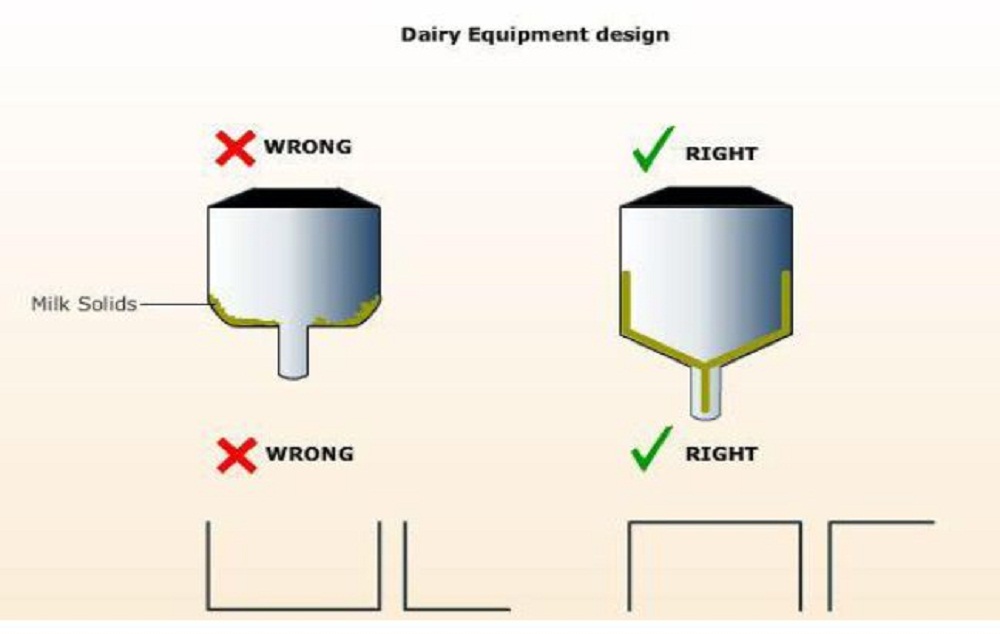
Equipment is easily accessible & readily cleanable either in an assembled position or when disassembled. Removable parts are readily de mountable to have Sanitary Requirements of the Dairy Equipment.
All product contact surfaces are self-draining.
When assembled, no pipe or fitting threads are exposed to the product. (Eg. Milk storage tank legs, pasteurizer frame etc. Further, the easily cleanable threads like SMS type are preferred over Acme threads.
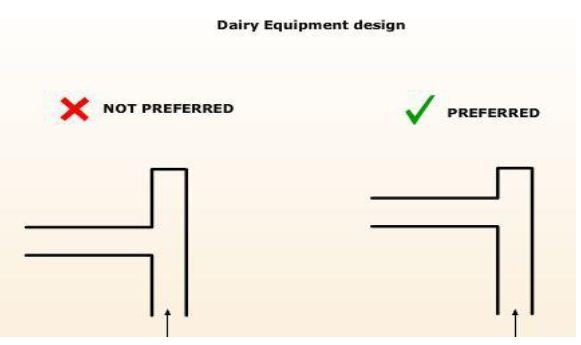
All permanent joints are welded and grounded to smooth finish.
Interior surfaces are smooth and even, especially at joints, thus eliminating crevices and projections.
Gaskets are eliminated wherever possible. If used, they should be smooth, non-toxic and product resistant. They should not contribute to off flavors in the product.
Possibility of processing under vacuum, which make the equipment susceptible for external contamination.
Effective velocity of flow and optimum agitation to prevent surface film formation.
Pre-heating the product with external devices.
Providing large vapour space where water to be removed.
Rapid removal of water vapour.
Avoiding air leaks.
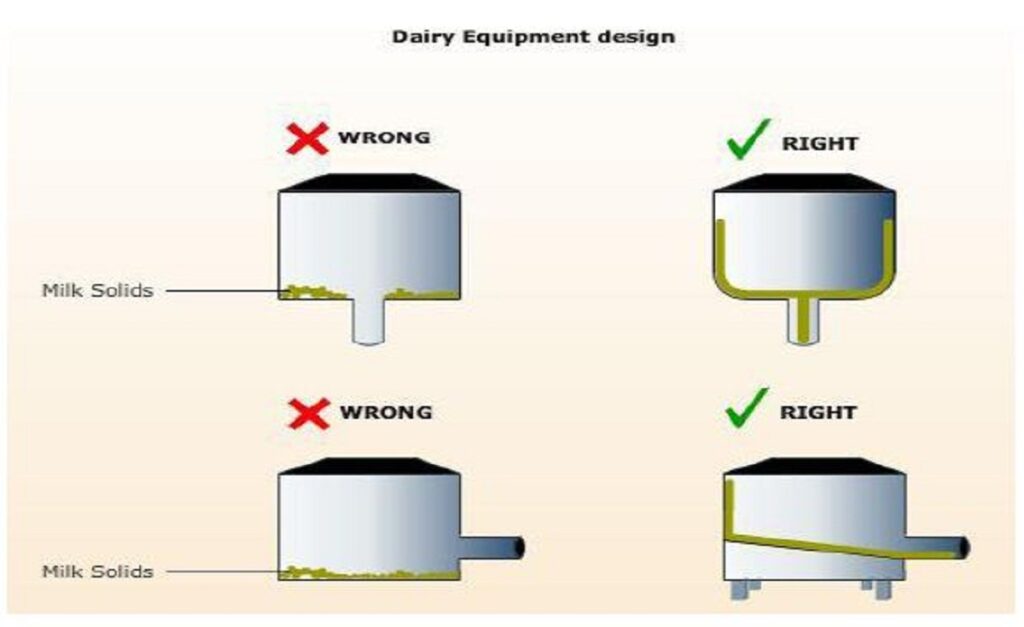
SPECIFIC REQUIREMENTS OF DAIRY PRODUCTS
Most of the Dairy Equipment are:
- Worked continuously throughout the year hence more wear and tear
- Have wide temperature variations during operations
- Have to with stand effects of water, steam, brine, refrigerants cleaning and sanitizing solutions.
- Are disassembled very frequently and hence exposed to damage of components
- Materials and Sanitary Requirements of the Dairy Equipment are of paramount importance in dairy and Food industry. Hence to achieve the above requirements, the equipment must be designed and materials chosen suitably.
- Dust proof, corrosion resistant external surface
- Smooth polished internal surface
- Minimum clearance of 100 mm between equipment base and floor with ball foot
- Absence of sharp corners and edges
- Elimination of vertical dead spaces or passages and capped tees
- Proper slope towards drain points
- Properly ground and polished welds
- Raised edge opening to prevent surface drainage in to container.
- Sanitary type inlet and outlet fittings.
MATERIALS COMMONLY USED IN DAIRY INDUSTRY to have Sanitary Requirements of the Dairy Equipment
Materials used for the construction of dairy equipment also play an important role in the sanitary design and maintenance of hygiene and to comply Sanitary Requirements of the Dairy Equipment
They are broadly divided into those parts of equipment that come in contact with the milk and milk products and those which do not come in contact and only act as structural components (supports, insulation and protective coverings) and other service equipment.
The commonly used materials are: Iron, Steel, Stainless steel, Aluminum, Insulation materials, Plastics, Glass etc.
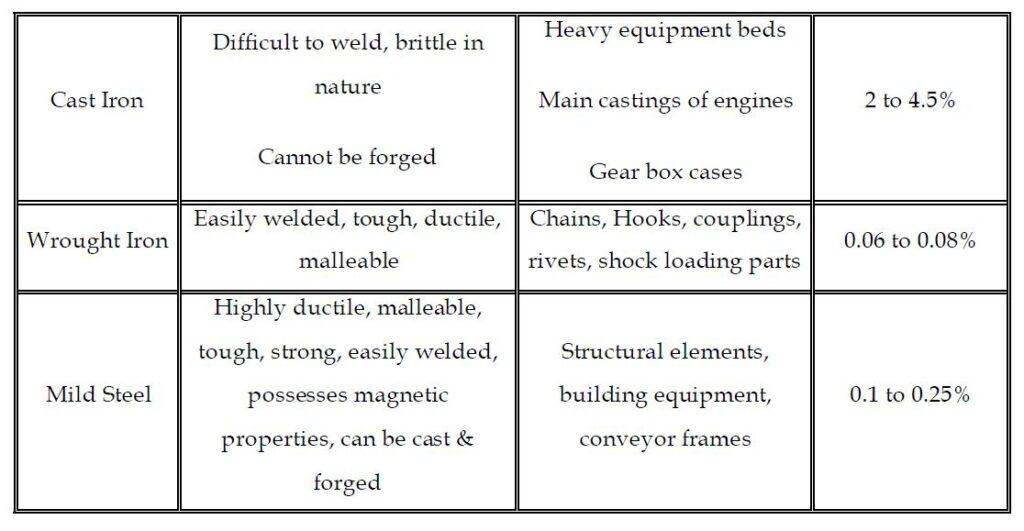
Iron and steel
These are mostly used in the structures that are not coming in contact with milk.
Iron added with Carbon is Steel. Depending on the percentage of carbon present, the steel is further divided in to Mild steel, Low carbon steel etc.
Further, Steel with Chromium content more than 10.5% is called Stainless Steel (SS). It is Particularly used where corrosion is minimum, and where the material is coming in contact with milk and milk products. Different proportions of Nickel are also added.
The Stainless Steels are broadly divided into Martensitic, Ferritic and Austenitic. They are classified into different grades. Of particular importance is the AISI 304 AND AISI 316 grade of stainless steels.
AISI 304 is used for construction of pipes, fittings, silos, tanks and vessels. AISI 316 is used for fabrication of plates of plate heat exchangers, CIP tanks, evaporator tubes which needs higher corrosion resistance. hence mostly dairy manufacturer preferred SS 316 to maintain Sanitary Requirements of the Dairy Equipment in their plant.
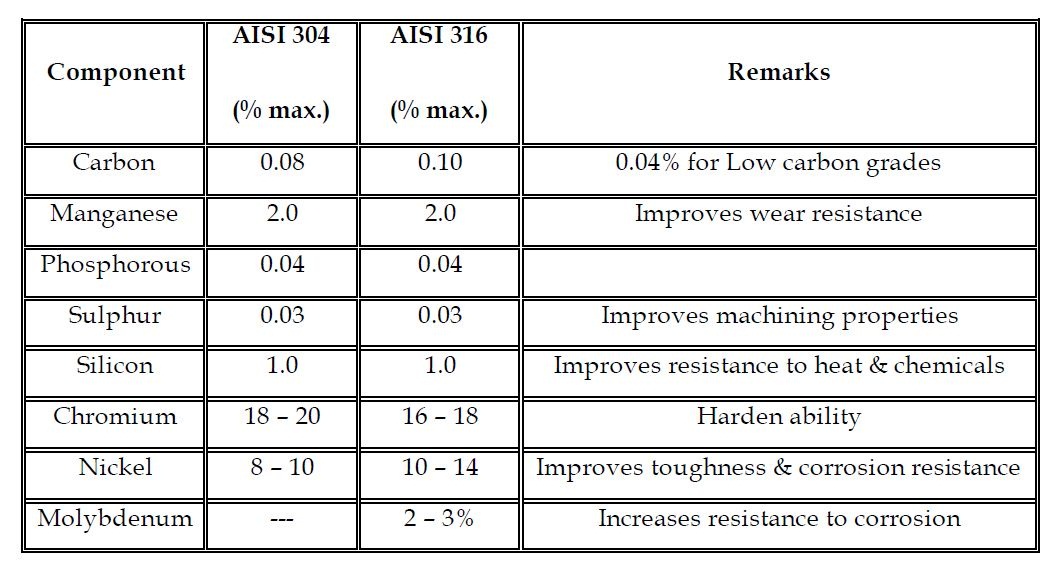
Aluminum is mostly used for making milk cans, but the trend now is to shift to stainless steel for better hygiene. It is light in weight, insoluble in milk, does not impart any flavor and can be spun into various shapes. But it is porous in nature, making it difficult to weld. but can be used to maintain Sanitary Requirements of the Dairy Equipment.
Resistance to abrasion is poor, and gives gray stain. The surface is generally given Anodizing treatment in which parts to be treated is made anode and dipped in electrolytic bath (of sulphuric, chromic or oxalic acid) to form a colour less and stable film on the surface hence sometimes compromise on Sanitary Requirements of the Dairy Equipment.
Plastics have wide range of applications, and are broadly classified into Thermoplastics and Thermosetting plastics.
Thermoplastics are manufactured by process called addition polymerization. They are liquids at higher temperature and crystallize readily at low temperatures because of simpler molecular structure. They generally show poor resistance to organic liquids. They are generally straight chain polymers, and have no cross links.
The common items that are used in dairy industry of the above category are Poly Tetra Flouro Ethylene (PTFE), Poly Ethylene (HDPE & LDPE), Poly Venyle Chloride (PVC), Acrylonitrile butadiene styrene (ABS), Cellulose acetate butyrate (CAB) etc. PTFE is used for pump shaft seal.
Thermostetting plastics on the other hand have cross links in their structure, and undergo permanent changes when raised to higher temperatures. Hence, they cannot be recycled.
The common items that are used in dairy industry are Fibre Reinforced Plastic (FRP) storage tanks, Epoxy glass, polyester reinforced glass, plastic gears, Phenol formaldehyde, and Elastomers like Polybutadiene and Polychloroprene (Neoprene).
Some external agency also certify the dairy equipment’s and provide detail knowledge and emphasize the importance on Sanitary Requirements of the Dairy Equipment like EHEDG.
Summery and conclusion
After detail reading we can understood that to manufacturing of the dairy product, Sanitary Requirements of the Dairy Equipment is the integral part and there are various materials which can be choose to comply the Sanitary Requirements of the Dairy Equipment.
To dive into on such interesting article pl do visit our website dairyheaven.com

